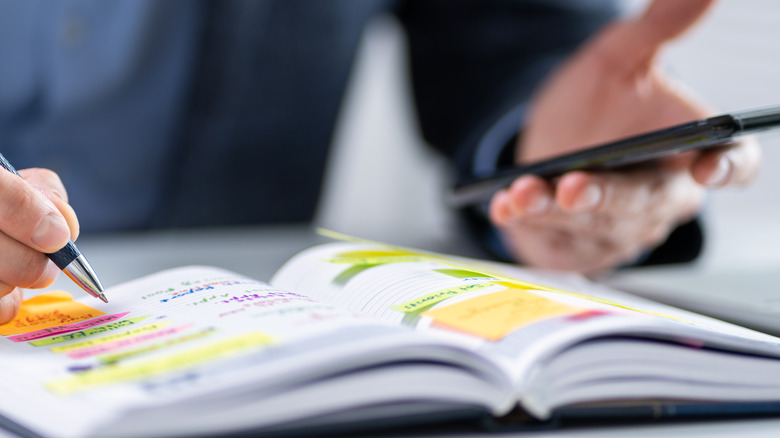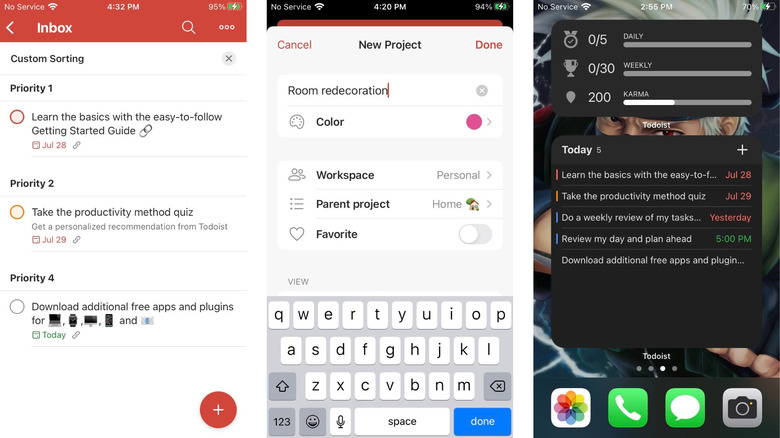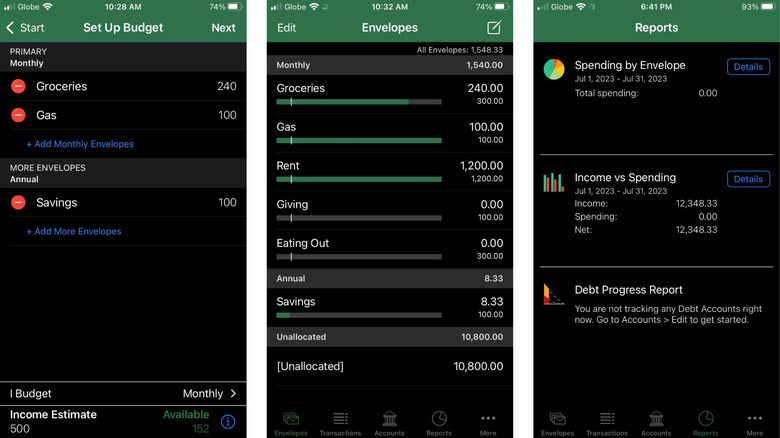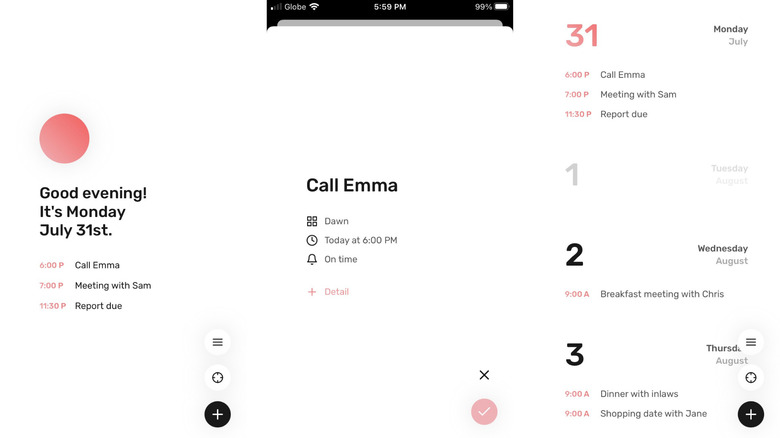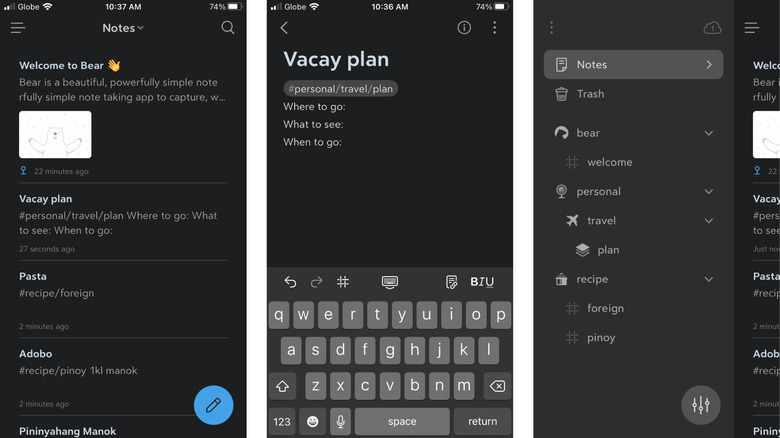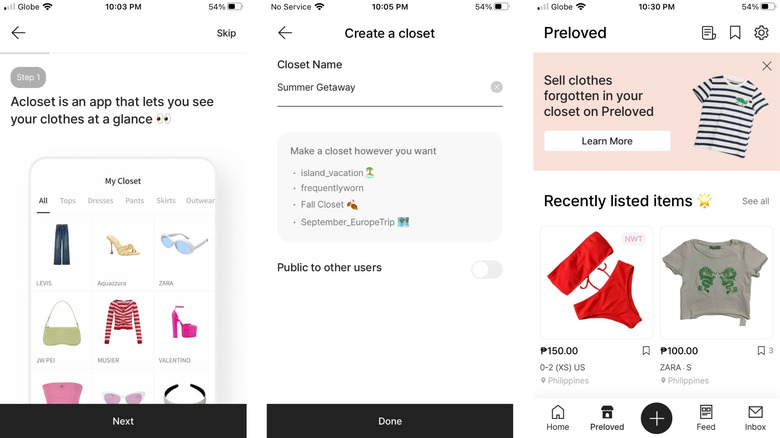5 Of The Best Organization Apps On iPhone To Help Simplify Your Daily Life
Whether you're a student or professional, life is already busy as it is. You have due dates to keep track of, tons of scheduled events and meetings to attend, and a million other things to accomplish. Naturally, then, in today's fast-paced world, staying organized is indeed pretty challenging. However, that doesn't mean you're doomed to lead a life of constant disarray and confusion. Help is just within arm's reach — and it comes in the form of organization apps.
Organization apps are designed to simplify and bring order into your daily life, but there isn't just one kind. You have an organization app for almost everything you might need for the day, from budget planners to habit trackers to note-takers. In this guide, we'll be walking you through the best organization app for your tasks, expenses, schedule, notes, and closet. These are all available on the App Store and won't cost you a cent.
For organizing your tasks: Todoist
When you're juggling too many things at once, the traditional to-do list on paper just won't cut it. It can easily turn into a jumbled and confusing mess, and you'll accidentally skip some crucial tasks. To save yourself from future disasters, an organization app for your tasks is a must-have. One of the task management apps that stands out from the rest is Todoist.
Todoist has a wide range of organizational elements to keep your tasks as neat and orderly as possible. To start off, there's the Projects feature that helps separate your tasks into distinct projects or categories. For instance, you could have separate projects for home redecoration, yard work, math class, and work internship. You can add these projects to a broader "parent project," like how home redecoration and yard work could both fall under a parent project labeled "Home."
Furthermore, each project can have subdivisions or 'sections' inside it. In your home redecoration project, you could have sections titled Workstation, Bed, and Closet. Finally, within these sections is a space for you to list specific tasks and any subtasks that go with them.
Todoist can be installed for free but comes with a Pro plan should you want advanced features. A downside to the app is that it only supports iOS 13 and higher, so you can't use it on older devices.
For organizing your expenses: Goodbudget
Among the best ways to organize your expenses and keep track of your budget is the envelope method. The idea is to split your income into different categories (a.k.a. envelopes) and fill each with a set amount. While you can track these categories on paper, it's best to use a budget organizer app like Goodbudget to keep things organized.
Goodbudget is built around the envelope method, setting it apart from other budget trackers. The app has four tabs for easy navigation: Envelopes, Transactions, Accounts, and Reports. The Envelopes tab presents your envelopes in a list, complete with their allocation and frequency (monthly or annual). It also tells you how much of your total income is left unallocated or if you've already exceeded your budget. If you haven't subscribed to a Plus account, you can only add up to 10 monthly and annual envelopes apiece.
The Transactions tab keeps track of all your financial transactions. This is where you log the expenses you pay off and the income you receive. The Accounts tab shows all your accounts, including checking, savings, cash, and debt. Lastly, the Reports tab provides charts for how much you spend by envelope, your income versus spending, and debt progress.
Goodbudget's user interface is pretty straight to the point and intuitive. However, if you're after a more visually pleasing interface, this app might not be for you.
For organizing your schedule: Dawn
Dawn is for people who have a full calendar of events but find mainstream calendar apps too overwhelming. Centered on minimalism and simplicity, this app is designed to streamline your schedule organization with intuitive and straightforward features. One of its main highlights is its Today page, which shows your events and tasks for the day at a glance. This is the first thing you'll see when you open the app, so you won't need to fumble around just to check your daily agenda.
You can also easily add new tasks and events on the Today page. All it takes is a single tap, and you'll be redirected to the task/event details page. This details page can be as basic or as elaborate as you want it to be. You can add the task/event name, date, and time and be done with it, or you can include more details like a subtask, note, and location.
Swipe right from the Today page to find all the calendar dates organized in a vertical list fashion. This lets you see all of your past and upcoming tasks/events. Another swipe to the right leads you to the Calendar Heatmap, which resembles a traditional calendar interface with event dates highlighted.
While Dawn does have a premium version, you can enjoy many of its features for free. The catch of the app, unfortunately, is that it seems to have been abandoned, with the latest update being in October 2022.
For organizing your notes and thoughts: Bear
The built-in Notes app on your iPhone is great for storing your shopping list, memos, and random thoughts. But if you prefer organizing your notes in numerous categories and subcategories, you probably find the Notes app's folder feature lacking. If so, consider checking out Bear instead. This note-taking app is just as user-friendly as iPhone's Notes but has additional features. For example, you can add hyperlinks, code, and bullet list, choose from at least 50 font styles, change the line height, line width, paragraph spacing, and indent, and export the note as various file types, including TXT, RTF, and PDF (if you're a Pro user).
The main draw of Bear, however, is its organizational features, particularly its hashtags. These hashtags readily sort each of your notes into a distinct category. You type your hashtag of choice inside the note, and the note will automatically be added to that particular category. What makes these hashtags stand out even more is their flexibility. They can come in one or multiple words and be nested into subcategories. Say you have a main category like #travel with a subcategory of #paris. Within #paris, you have more subcategories labeled #things-to-do and #places-to-eat. You'll conveniently find this orderly hierarchy on the sidebar, where you can pin main categories to make them easier to access.
Although Bear is overall an excellent app, some users complain about its slow syncing issue and sporadic crashes.
For organizing your closet: Acloset
Admit it — you love filling your closet with so many clothes that you don't even remember every single shirt, pants, shorts, and dress you own. So every morning, you end up staring at your clothes pile for hours, figuring out what to pick for the day. If this sounds like a daily problem, Acloset might just be what you need. This clothes organization app serves as your much-needed digital closet. It keeps a photo compilation of your entire wardrobe and automatically sorts every piece of clothing into the proper category (e.g., top, dress, pants, outer), season (e.g., summer, winter), color, pattern, and material. You can add details like brand and occasion to further organize your outfits.
Apart from the general clothes compilation, Acloset lets you create custom closets to group your stuff into different themes or purposes. For instance, you can have a closet for your summer trip to Bali, one for your work attire, and another for your Christmas-themed apparel. If you're a planner, you'll also love the OOTD Calendar, where you can plot out your outfits for the upcoming days. This can simplify your mornings and save you lots of time. Another great feature of Acloset is its AI-powered outfit suggestion that puts together a complete outfit for you based on the occasion and weather.
Acloset is completely free, but you'd first need to create an account to use the app.
